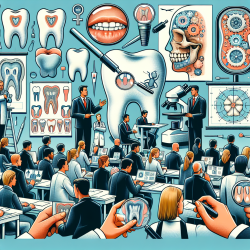Introduction
Transcutaneous Electrical Stimulation (TES) has emerged as a potential tool in dysphagia rehabilitation, particularly in enhancing swallowing function. While TES has been used in other rehabilitation fields for decades, its application in swallowing therapy is relatively recent. This blog explores the current research on TES, its clinical and physiological impacts, and provides insights for practitioners looking to enhance their therapeutic approaches.
Clinical Impacts of TES
The clinical effectiveness of TES in dysphagia rehabilitation has been a subject of debate. Some studies suggest that TES, when combined with traditional therapy, offers superior outcomes for patients, particularly those recovering from strokes. For instance, Kushner et al. (2013) found enhanced outcomes in stroke patients when TES was combined with traditional dysphagia therapy. However, the lack of randomized procedures and control groups in some studies necessitates cautious interpretation of these results.
Contrastingly, other studies have reported no significant benefits of TES over traditional therapy, especially in patients with Parkinson's disease. These mixed results highlight the need for further robust clinical trials to ascertain the efficacy of TES in different patient populations.
Physiological Impacts of TES
TES's physiological effects on swallowing muscles are still being explored. Some studies have demonstrated TES's ability to lower the hyolaryngeal complex, potentially serving as a resistive exercise to improve swallowing function. However, the immediate and long-term physiological impacts of TES remain under-researched.
Recent studies have begun to explore the effects of different TES parameters, such as pulse duration and frequency, on swallowing physiology. These studies suggest that tailored TES protocols, considering individual patient physiology, may enhance therapeutic outcomes.
Future Directions
The narrative review by Barikroo (2020) underscores the need for more comprehensive research into TES's role in dysphagia rehabilitation. Future studies should focus on:
- Conducting multicenter clinical trials with robust methodologies to validate TES's efficacy across various etiologies.
- Exploring the physiological-based TES rehabilitation approach, which involves tailoring TES protocols to specific swallowing pathophysiologies.
- Investigating the impact of TES on neural activation and plasticity, which could provide insights into its long-term benefits.
Practitioners are encouraged to stay informed about ongoing research and consider integrating TES into comprehensive therapy plans, especially for patients with stroke-related dysphagia.
To read the original research paper, please follow this link: Transcutaneous Electrical Stimulation and Dysphagia Rehabilitation: A Narrative Review.










